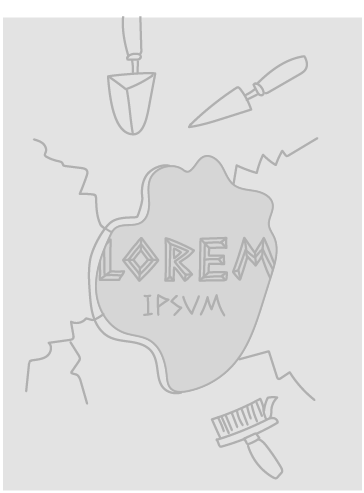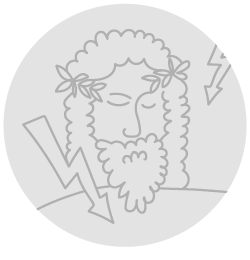Title of the work
Country of the First Edition
Country/countries of popularity
Original Language
First Edition Date
First Edition Details
Robert Burleigh, Raul Colón ill., Pandora. San Diego: Silver Whistle, 2002, 32 pp.
ISBN
Genre
Myths
Picture books
Target Audience
Children (5–8)
Cover

We are still trying to obtain permission for posting the original cover.
Author of the Entry:
Miriam Riverlea, University of New England, mriverlea@gmail.com
Peer-reviewer of the Entry:
Elizabeth Hale, University of New England, ehale@une.edu.au
Lisa Maurice, Bar-Ilan University, lisa.maurice@biu.ac.il

Robert Burleigh
, b. 1936
(Author)
Robert Burleigh is a Chicago-based writer of poetry, plays, and fiction for both adult and child readers. He studied at DePauw University in Indiana and later at Columbia University, graduating with an MA in Humanities. Since the early 1990s he has published more than 40 children’s books. His diverse body of work includes stories about sport, science and art, and features both biography and historical fiction (Burleigh’s books run a broad gamut, from stories geared for pre-schoolers to survival stories and biographies aimed at seven to eleven-year-olds). In addition to Pandora (2002), Burleigh has collaborated with Raul Colón on a retelling of another Greek myth, Hercules (1999), which was honoured as a Smithsonian Notable Book. Many of Burleigh’s other works have received literary awards and recognition.
He is also a visual artist, working under the name Burleigh Kronquist. His paintings, drawings and sculptures have featured in a number of exhibitions in Chicago and other parts of the United States.
Source:
The author’s personal website (accessed July 12, 2018).
Bio prepared by Miriam Riverlea, University of New England, mriverlea@gmail.com and Zoia Barzakh, Bar-Ilan University, zoia_barzakh@mail.ru

Raul Colón
, b. 1952
(Illustrator)
Raul Colón was inspired to become an artist after chronic childhood asthma kept him frequently housebound, reading comics and drawing. Born in New York City, his family moved to Caguas, Puerto Rico in the 1960s, where he studied commercial art. He returned to the US to work at an educational television centre in Florida, designing puppets and short animations, before returning to New York, where he still lives. His soft, richly coloured illustrations in pencil and watercolour employ a scratchboard technique to give depth and texture to his work. He has illustrated children’s books with Robert Burleigh, Jane Yolen and Robert Daniel San Souci, and wrote and illustrated Orion Blasts Off! (2004), the story of a boy who learns to use his imagination after his computer breaks down. Colón has been recognised with a Golden Kite Award for Dona Flor (2013, with Pat Mora) and both Gold and Silver medals from the Society of Illustrators. In 2013 the Orlando Museum of Art hosted Tall Tales and Huge Hearts: Raul Colón, a solo exhibition of his work.
Bio prepared by Miriam Riverlea, University of New England, mriverlea@gmail.com
Summary
Burleigh’s foreword to this picture book retelling of the Pandora myth relates the background to the story, including Prometheus’ creation of animals out of clay, and the gifts that his brother Epimetheus gives to each of them. When Prometheus fashions the first men, Epimetheus realises too late that there are no more gifts to give to them. So Prometheus steals fire from the gods to keep them warm. In retaliation Zeus punishes Prometheus and mortal man by sending Pandora, the first woman, to earth, as well as a jar that no one is allowed permitted to open.
Pandora lives a comfortable, privileged existence, but she is bothered by a preoccupation that ‘interfered with her happiness’: what was inside the forbidden jar? Colón’s illustrations depict her going about her daily chores, with her thoughts always returning to this nagging question. Epimetheus is firm with his wife, reminding her that the gods have commanded them never to open the jar. Unable to obey her husband’s instructions to keep away, one day Pandora steals into the room where the jar is displayed. She projects on to it a seductive voice that calls to her ‘Open me, open me, open me!’ and even personifies its shape, so that the handles of the pithos seem ‘like strange staring eyes’. Looking more closely, she realises that the jar is inscribed with the story of Prometheus, who steals fire from Olympus to give to humankind, and is punished by Zeus. Pandora wonders if this narrative is a warning; if she disobeys the gods, will she too be punished?
Running in fear, Pandora calms down when she meets her old servant Xerxes, who tells her the story of her creation, ‘a perfect creature of pure clay.’ True to her name, each of the gods bestows on her a gift, and it is Athena who endows her with curiosity. This story is accompanied by an evocative illustration that stretches across three quarters of a double page spread. Pandora lies on the ground, her long red hair spread loosely around her, and her eyes closed, as if asleep or in ecstasy. Her nearly naked body is covered with red and yellow flowers and scattered with leaves. Elements of the image evoke the work of Botticelli and Gustav Klimt, highlighting Colón’s engagement with the art historical tradition.
Walking in the forest, Pandora meets a mountain lioness, and the mysterious encounter makes her bold enough to return home to open the box. After hesitating several times, she lifts the lid, and falls to the ground as ‘dreadful winged creatures flap from the jar.’ The following page opening shows a cloud of twisted, bat-like creatures menacing Pandora, while the message ‘I WILL TEAR AT YOUR SOUL UNTIL YOU NEED AND NEED’ runs across the page. As she struggles to refasten the lid, she hears the tiny voice of Hope from inside the jar, declaring it will ‘remain, / After the suffering, / After the pain!’ Running outside, Pandora meets Xerxes and confesses to him what she has done. The old man comforts her and says that with evil now in the world, they must be brave. Pandora is encouraged, and feels determined to use the gifts given to her by the gods. The final illustration shows her carrying the jar of hope, holding ‘on to it tightly – / As long as she lived.’
Analysis
This is a dreamy, poetic retelling of the myth of Pandora, with illustrations and text rich in symbolism and allusion. Unlike many retellings of this myth which draw upon Nathaniel Hawthorne’s version, Burleigh and Colón follow Hesiod in depicting Pandora with a jar (a pithos), instead of the more familiar box. Burleigh writes that ‘Even from far away, / The jar seemed to give off an odd glow’ and Colón’s illustrations use warm tones to illuminate this special vessel as if in a spotlight.
Where other children’s versions emphasise Pandora’s disobedience, this text highlights her ‘wish to know all things’, a gift from the goddess Athena. This text is fairly unique in locating the story within its wider mythological context, through references to the story of Prometheus’ theft of fire and subsequent punishment, and the story of Pandora’s creation, both within the text’s foreword, and embedded within the narrative. Epimetheus works with his brother to establish mortals on earth, but his appearance in the story itself is limited to a single page, where he reminds Pandora of the instructions of the gods. Xerxes, the old servant, has a bigger role to play.
The text is rendered in free verse, with italics used for emphasis and to reveal Pandora’s private thoughts. When the jar is opened, the evils that escape introduce themselves in rhyming couplets, a sudden shift in the cadence of the text that serves to heighten the drama of this moment. Pandora falls to the ground as a mass of black winged creatures and the words I AM GREED swarm over her. The intrusion of the written word into the visual narrative adds to the horror.
In this version Hope remains sealed within the jar, a source of comfort to Pandora. Again, in this detail Burleigh draws upon the Hesiodic tradition, in which Hope remains under the rim of the jar (Works and Days 96–99). In Hawthorne’s retelling, and the many texts under his influence, Hope flies out into the world. Though a subtle difference, this variation underscores the centrality of Pandora’s role. The final page of Burleigh and Colón’s text stresses ‘Hope was hers’, and shows her cradling the jar, as one would a small child. This Pandora is not only responsible for opening the jar of evils, but also for alleviating their impact on humankind.
Further Reading
“Robert Burleigh” (1936–). Something about the Author, edited by Lisa Kumar, vol. 244, Gale, 2012, 31–38. Something About The Author Online (accessed: February 22, 2018).
“Raul Colón”. Something about the Author, edited by Maikue Vang, vol. 156, Gale, 2005, 27–28. Something about The Author Online (accessed: February 22, 2018).
Matthew J. Palm, "Raul Colon is latest artist in OMA's “Picture Book” series" Orlando Sentinel, 22 August 2013 (accessed: July 23, 2018).


